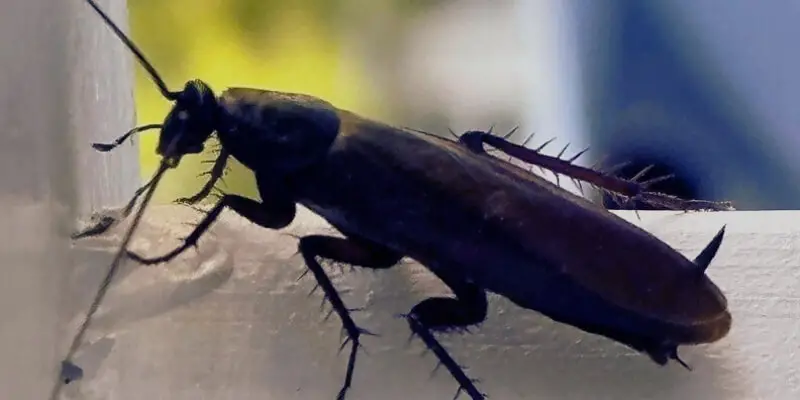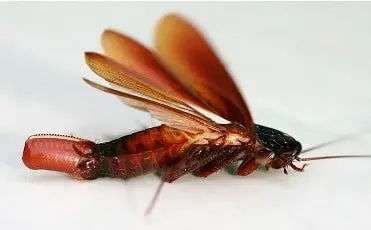Smokybrown Cockroach Facts

Are you fascinated by the world of insects, or perhaps you’ve found some uninvited guests crawling around your attic or garden? Either way, the smokybrown cockroach is a critter that has piqued your interest for good reasons.
The name itself might give you an ominous feeling, but these cockroaches are vital to the ecosystem. Here’s a deep dive into the world of the smokybrown cockroach, scientifically known as Periplaneta fuliginosa.
Quick Facts of Smokybrown
| Attribute | Description |
|---|---|
| Scientific Name | Periplaneta fuliginosa |
| Size | Up to 38 mm |
| Color | Uniform black or mahogany |
| Wings | Extend beyond the body; strong fliers |
| Habitat | Southeastern U.S., warm and humid environments |
| Diet | Opportunistic feeders |
| Reproduction | Average of 10 oothecae, each with 20 eggs |
| Lifespan | 160 to 716 days |
Appearance
Adult smokybrown cockroaches are strikingly large, reaching up to 38 mm in length. They boast a shiny, uniform black or mahogany hue, which isn’t just for aesthetics—it also acts as a natural camouflage.
This coloration allows them to hide effortlessly amid leaf litter and mulch. Their nymphs, however, are not completely black; they have a whitish stripe running down their thorax and the tips of their antennae.
Wings and Flight
Unlike some other roach species, adult smokybrown cockroaches are strong fliers. Their wings extend beyond the length of their body, enabling them to cover short distances.

Where Do They Live?
Though mostly a pest of the southeastern United States—stretching from central Texas to Florida and North Carolina—they’ve been found as far north as Indiana, Illinois, and even in Southern California.
Preferred Habitats
Smokybrown cockroaches crave warm, high-humidity conditions. Wooded areas are their playground, where they often hide in tree holes and under mulch. The availability of a moist environment is crucial for their survival as they are prone to dehydration.
Urban Encroachment
Around human settlements, these cockroaches seek solace in places such as soffits, eaves, gutters, and mulch beds. Inside homes, they are frequently found breeding in attics, where they can increase unnoticed.
Dietary Habits
These cockroaches are scavengers with a broad palate. While they prefer decaying plant matter, they won’t say no to:
- Dead insects
- Fecal matter
- Meats
- Starches
- Sweets
Life Cycle
Smokybrown cockroaches have a life cycle consisting of three stages: egg, nymph, and adult. A female can produce an average of 10 egg cases, or oothecae, during her lifetime.
Each ootheca contains about 20 eggs and is attached to a protected surface until the young hatch. Depending on environmental conditions, their lifespan ranges from 160 days to 716 days. They can live for up to 2 years or more in ideal conditions.
Miscellaneous Facts
- Can they fly? Yes, adults can.
- Do they bite? Bites are rare.
- How are they different from American Cockroaches? They are slightly smaller and have a uniform mahogany color.
Conclusion
Whether you find cockroaches repugnant or riveting, there’s no denying that the smokybrown cockroach is a fascinating creature, particularly when you delve into its attributes and lifestyle. If you come across them, it’s crucial to remember that they are a part of a complex ecosystem that we are still striving to understand.
So, the next time you’re digging around your garden or cleaning out your attic, keep an eye out for these mahogany marauders. Their presence might make you pause and marvel at the intricacies of life right under our noses—or inspire you to call pest control!

James E. Butkovich, Pest control maven with a knack for eco-friendly & Chemical solutions. Blogger with a mission to make homes pest-free, one post at a time.